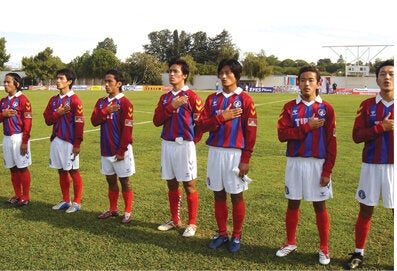Not many places in the world can boast of the same beauty that as Tibet. Yet, this beautiful plateau region on the northeast of the great Himalayas is not the happiest of places in the world. Over the past few decades, Tibet has been a boiling pot of rebellions, crackdowns and separatist movements. Since the Tibetan Rebellion of 1959, things have never been the same for the inhabitants of this scenic region. Once the 14th Dalai Lama fled to Dharamsala in India, thousands of Tibetans followed suit. Since 1959, over 150,000 Tibetans are said to have taken refuge in neighboring India. The Central Tibetan Administration (CTA), Tibet's government in exile, was formed in 1959, shortly after the Dalai Lama fled to India, and it operates from Dharamsala, in the north Indian province of Himachal Pradesh.
Football was first introduced in Tibet about a hundred years ago, when the British built a military training facility in Lhasa in 1913. It didn't take long for the sport to grow in popularity in the region, and in a few decades' time, many popular teams came to the fore in Tibet, the most notable one being the Kham football team. However, the Cultural Revolution, engineered by Mao Zedong in 1966, had a devastating effect on the game in Tibet. The beautiful National Stadium at Kham was destroyed during this time, and although it was later rebuilt, the football team of Kham was never truly revived again. Some of the members of this team went into exile, and later, cooperated with the Tibet national football team as trainers. As instability ensued in the region for the coming years, Tibetans continued fleeing to India. By the late seventies, Tibet's footballing dreams looked well and truly shattered.
In 1981, a new initiative was started to revive the sport by Tibetans in exile. The Gyalyum Chenmo Memorial Gold Cup, an inter-club cup tournament, in memory of the mother of the 14th Dalai Lama, was started with an aim of bringing Tibetans together during the difficult times. The tournament's commencement proved to be a masterstroke, as in a few years' time, it became the most popular sporting event among Tibetans. Sixteen years later, Michael Nybrandt of Denmark went camping with a friend to Tibet. One night, while still in Tibet, Nybrandt dreamt of coaching the Tibetan national football side. Convinced that he had received his calling, he contacted the Tibetan government-in-exile about the idea of a national football team. The refugee government was so impressed by Michael Nybrandt's ideas that he was immediately hired to form a national football governing body. In 2000, the Tibetan National Football Association took shape. A year later, Michael Nybrandt helped organize Tibet's first ever international game, against the Greenland national football team. Despite Chinese threats of ceasing all trade relations with Denmark, the latter gave the go-ahead for the game, which was held at Copenhagen on 30th June, 2001. Despite losing the game by the score-line of 4-1, the game marked a new beginning for football in Tibet, and for the Tibetan freedom movement.

Following their first game in 2001, the Tibet national football team, popularly known as 'The Forbidden Team', has participated in quite a few friendlies. A couple of years ago, Cassie Childers, an American football coach, with the help of the Tibetan National Sports Association, started the Tibetan Women's Soccer (TWS) initiative, with the aim of spreading the game among the female Tibetan exiles in India, and forming a national women's side. Childers's initiative has helped women's football progress at a commendable rate, and it won't be long before a national women's football team of Tibet comes into force. In recent years, the Gyalyum Chenmo Memorial Gold Cup has been given a more professional look. The Tibetan National Sports Association has been a major force behind this event. The national associations must be lauded for helping shape the dreams of many Tibetans. Although the Tibetan National Football Association has not received official recognition from the AFC or the FIFA, and is a long way off doing so, football has still been able to bring Tibetans together, and provide strength to their freedom movement. Independence for Tibetans is nowhere near; yet, the beautiful game has, in many ways, helped in keeping the flame alive. May Tibetan football continue its upward rise.
